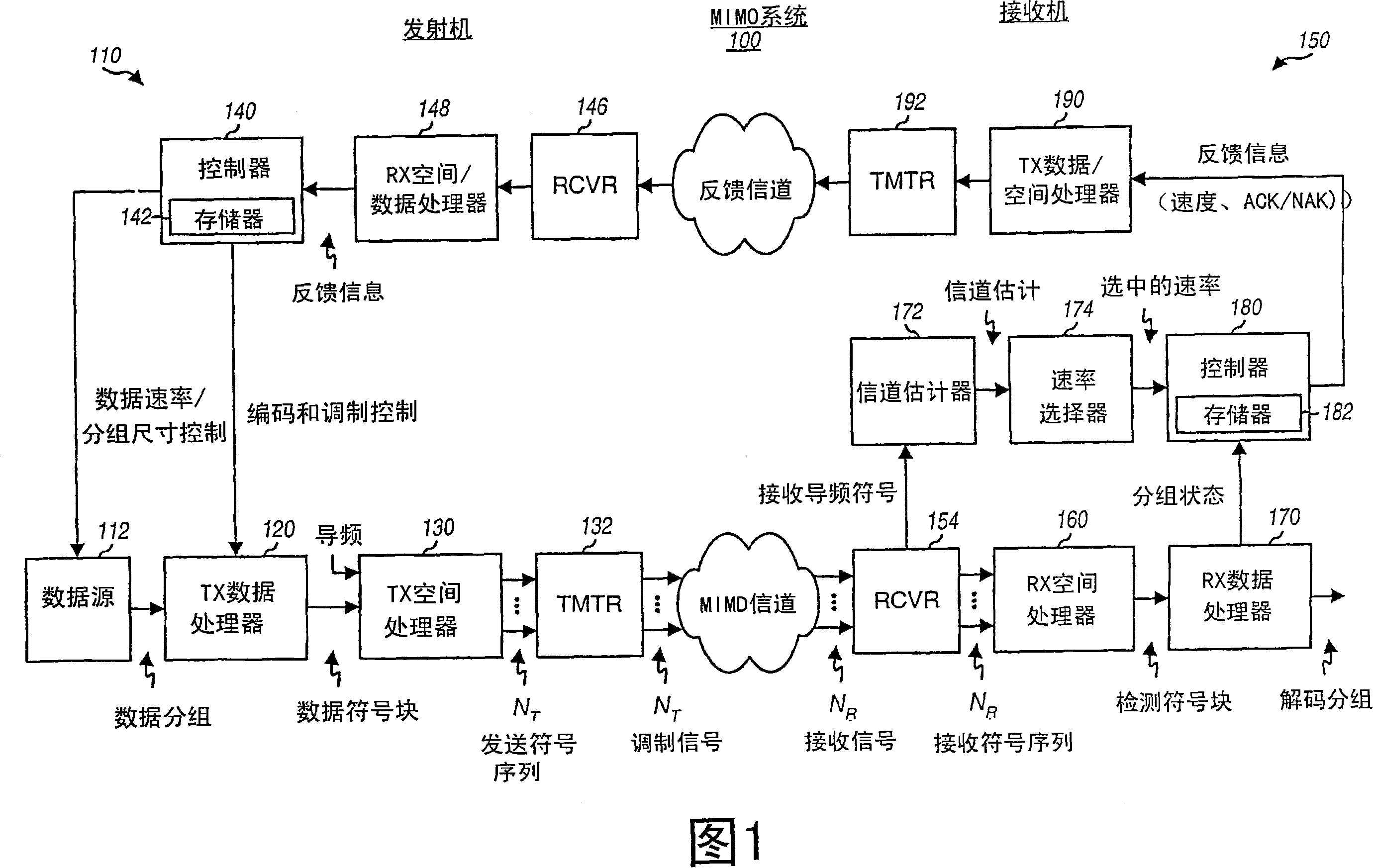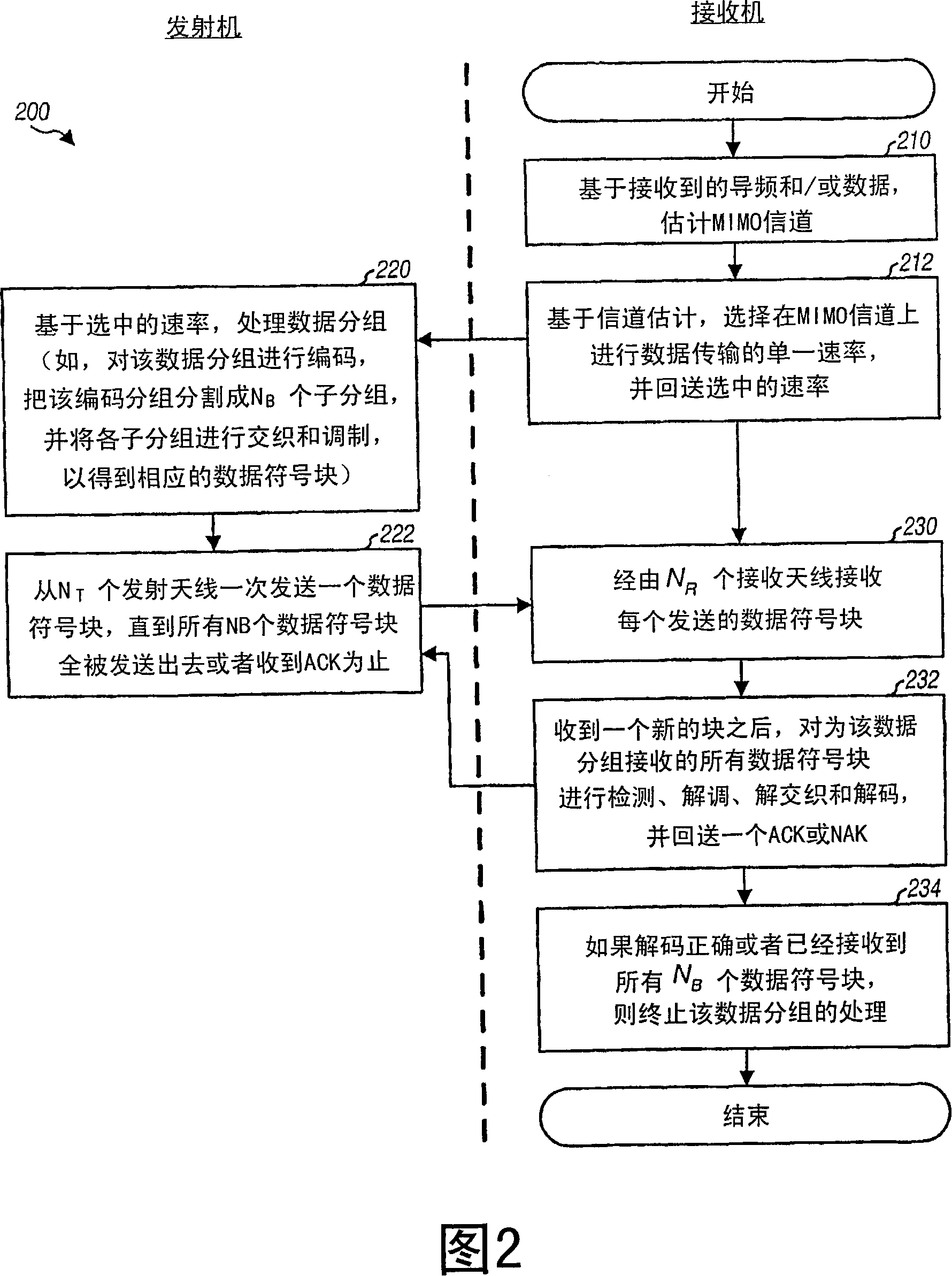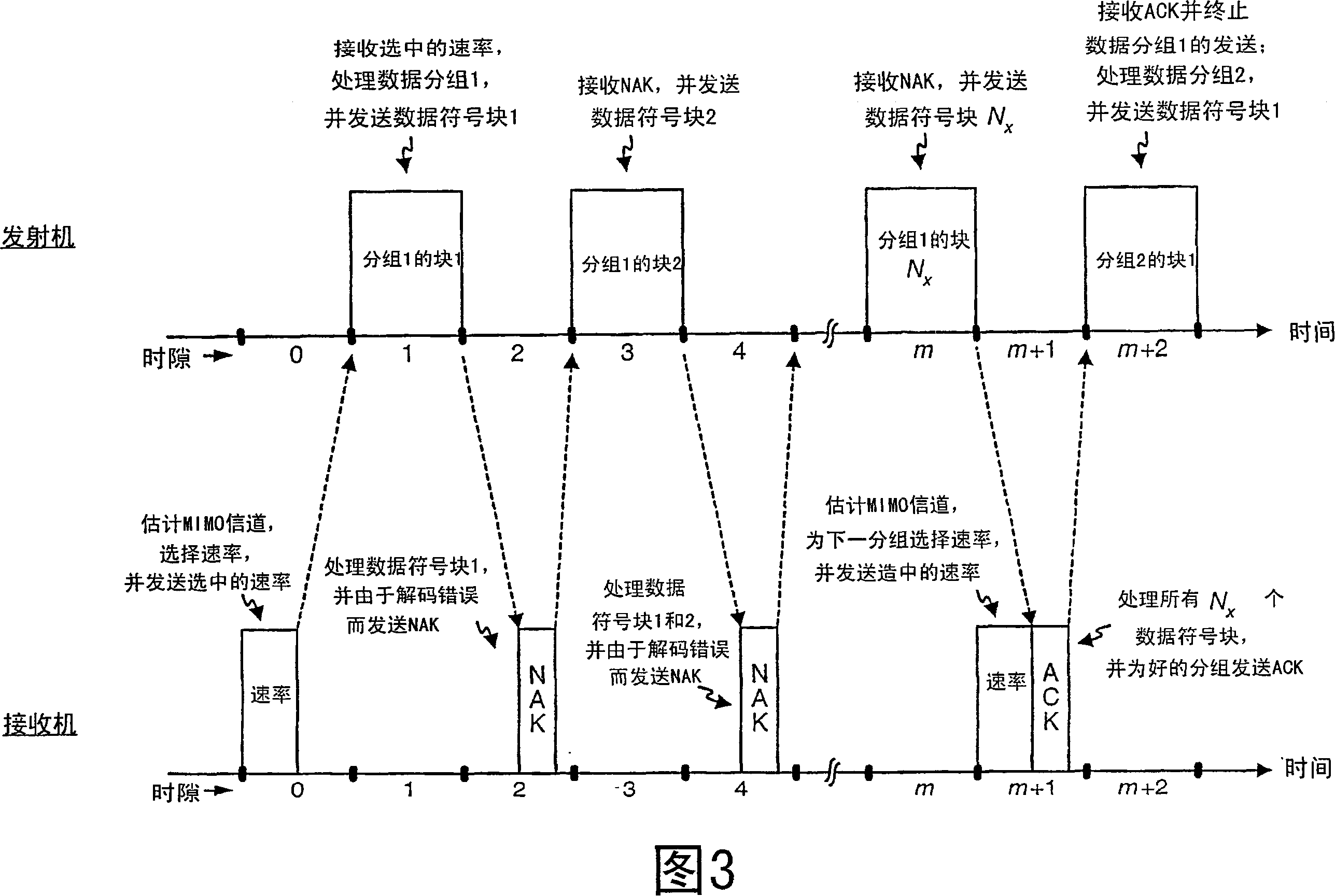Incremental redundancy transmission in a mimo communication system
A communication system, incremental redundancy technology, applied in the field of communication, can solve problems such as excessive consumption of system resources, decoding errors, underutilization of channel capacity, etc.
- Summary
- Abstract
- Description
- Claims
- Application Information
AI Technical Summary
Problems solved by technology
Method used
Image
Examples
Embodiment Construction
[0029] The word "exemplary" is used herein to mean "serving as an example, illustration or illustration". Any embodiment or design described herein as "exemplary" is not to be construed as preferred or advantageous over other embodiments or designs.
[0030] for N S A MIMO system with spatial channels, from N T transmit antennas can simultaneously transmit N P data groups, where 1P S . A single rate can be used for all data packets sent simultaneously, regardless of N P value. Using a single rate simplifies processing at both the transmitter and receiver ends of a MIMO system.
[0031] 1 shows a block diagram of a transmitter 110 and a receiver 150 in a MIMO system 100 performing IR transmission. In transmitter 110 , a TX data processor 120 receives data packets from data source 112 . TX data processor 120 processes (e.g., formats, encodes, segments, interleaves, and modulates) each data packet at a rate selected for the packet to obtain the N B data symbol blocks, whe...
PUM
 Login to View More
Login to View More Abstract
Description
Claims
Application Information
 Login to View More
Login to View More - R&D
- Intellectual Property
- Life Sciences
- Materials
- Tech Scout
- Unparalleled Data Quality
- Higher Quality Content
- 60% Fewer Hallucinations
Browse by: Latest US Patents, China's latest patents, Technical Efficacy Thesaurus, Application Domain, Technology Topic, Popular Technical Reports.
© 2025 PatSnap. All rights reserved.Legal|Privacy policy|Modern Slavery Act Transparency Statement|Sitemap|About US| Contact US: help@patsnap.com



